Designed and built by German microphone manufacturer Beyerdynamic (that’s pronounced like “buyer-dynamic”), the M 160 is a unique microphone that’s perfect for many difficult recording situations. In this article we’ll take a look at some of the features that make it so suited for harsh sources and the unique challenges of recording in a home studio, such as its warm tonality, rejection of off-axis sound, small size, and fast transient response.
Sylvia Massey has said that good microphones are one of the most important parts of your studio, if not the most important. This makes sense — the microphone is the first step in the recording chain for any vocal or acoustic instrument, and as long as you’re using low-quality microphones you’ll have a hard time getting pro-quality tracks.
Unique Among Ribbons
One of the smallest ribbon mics ever made, the M 160 is actually a “double ribbon” microphone, employing two parallel ribbon elements instead of one, and it differs from standard ribbons in a few areas:
- Compared to many single-ribbon mics which are more fragile, it’s well-suited to high sound pressure levels and can handle drums, brass, electric guitar amps, and screaming vocalists with ease.
- The M 160 uses a hypercardioid pickup pattern, as opposed to the figure-8 pattern found in most ribbons which picks up a lot of room sound. This gives you much more isolation and rear rejection.
- The hypercardioid pattern, in combination with its small size, lets you use it in places that aren’t possible with a traditional ribbon design, including in multi-mic situations (acoustic guitar, upright bass), or with multiple players.
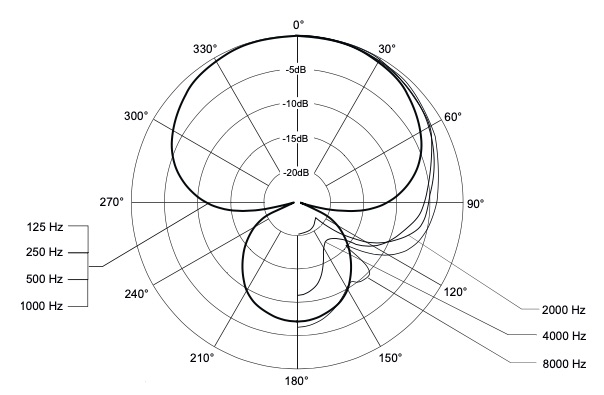
Tonality
The tonal signature of the M 160 is very warm. This mic is great for any harsh sound source, as it tends to roll off treble with a pleasing fatness in the low end that beefs up thin-sounding instruments and vocals. This inherently thick and musical tonality shines on brass and acoustic and electric guitar, and it acts as a natural de-esser. While the high-mids and treble are certainly restrained, the transient response of the mic is actually very fast. This gives you a detailed high-end response that takes EQ well — you’d be surprised how much EQ boosting this mic can take if recorded with a decent preamp. However, the M 160 is still best for when you want a warm sound — you won’t get the immediacy and treble punch of a condenser with a ribbon mic.
The proximity effect exhibited by the M 160 is notable, as you can see from the difference in frequency response at 10 cm and at 1 m. If your source is sounding too muddy, try backing the mic up for a more neutral sound.
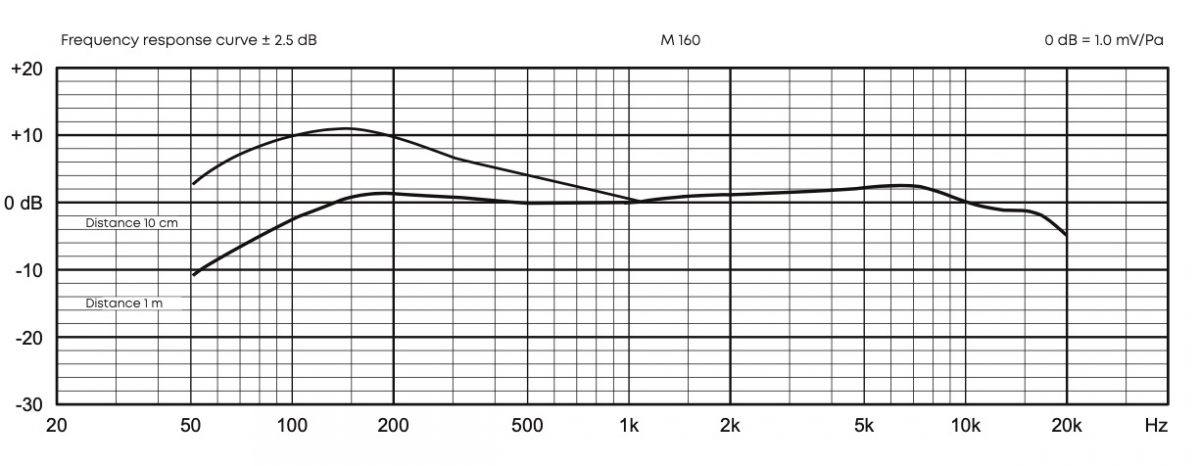
Uses
Although it may be best known as Jimi Hendrix’s mic for electric guitars in-studio, and as the overheads for Led Zeppelin’s “When the Levee Breaks”, the M 160 is useful in other applications. It can deliver a beautifully warm vocal sound, much like a standard single-ribbon mic, with the aforementioned quick transient response and EQ-ability. One option is to set up the M 160 as well as a condenser, so you have both options when it’s time to mix — sometimes what seems like a less-exciting vocal from the M 160 is actually just mid-focused enough to cut through a dense mix.
The de-harshing characteristic of the M 160 can work wonders when recording in a home studio environment. Home studios often use less-than-stellar-sounding rooms for recording, and the M 160 is a one-two punch for dealing with rough rooms: a smooth treble roll-off plus excellent rejection of side and rear audio. The M 160 zeroes in on whatever you’re micing, and minimizes room noise. And if your room is causing unpleasantness in the upper mids and treble (especially if you’re using a lower quality instrument or amplifier), the M 160 is one of your best bets to get a smoother sound. Try it on anything that sounds too small — including shaker, tambourine, ukulele, bongos/congas, and glockenspiel.
Related: Mix Tips: Cleaning Up the High End
A little bit of treble management can really help to smooth out your mixes. Learn how! | Read »
The Lower-Gain Ribbon Mic
The M 160 also differs from most ribbon mics in the amount of gain required. Whereas standard ribbon designs are notorious for requiring more clean gain than most preamps can deliver, the M 160 can record most sources using any half-decent preamp, including ones built into many audio interfaces. This is another point that makes it great for the home studio. For example, if you’re tracking a vocal with your best condenser and preamp, you can throw the M 160 up too and plug it directly into your interface, or whatever lower quality preamp you have around — you’ll still get a usable track, and it may well end up being the one you use in the final mix!
Also, for fans of M/S recording (as everyone should be), the M 160 combines perfectly with Beyerdynamic’s M 130 for detailed, natural mid/side capture.
Other Features
The M 160 is solidly built, and although it is a ribbon, you don’t have to be quite so careful not to breathe on it the wrong way, compared to the more common single-ribbon mics. Its matte-black finish avoids reflecting light, which makes sense considering it was originally designed for use in TV and film studios (this also explains the focused pickup pattern). This makes it a good choice for audio for video, on location and in the studio.
No single mic can do everything. For some sounds you will want the bright, present sound of large- and small-diaphragm condensers, and sometimes a good dynamic is right for the job. But the Beyerdynamic M 160 is certainly a great all-around mic for home and professional studios, as well as for those recording audio for video. Its warm, natural sound and tight pickup pattern deliver a clear, musical picture of the original sound source — and it takes EQ and other processing like a champ.

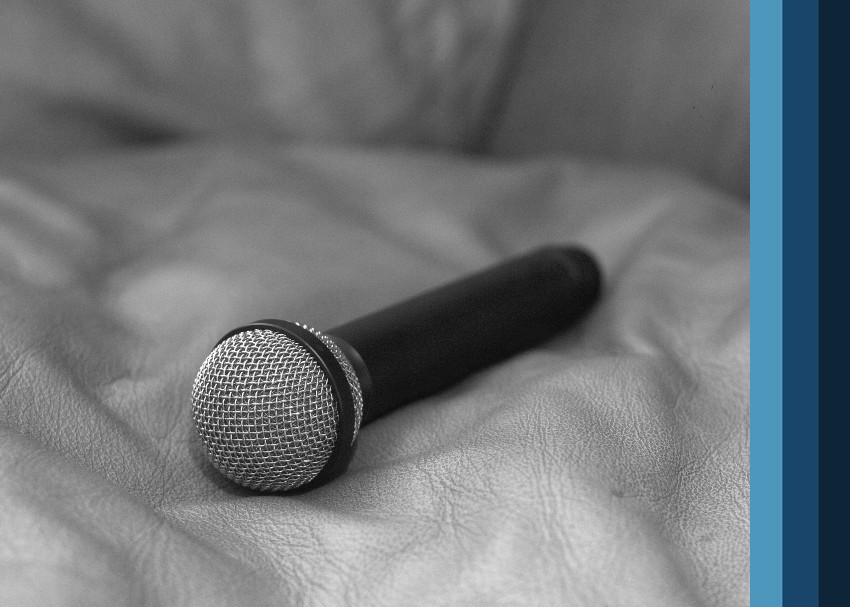

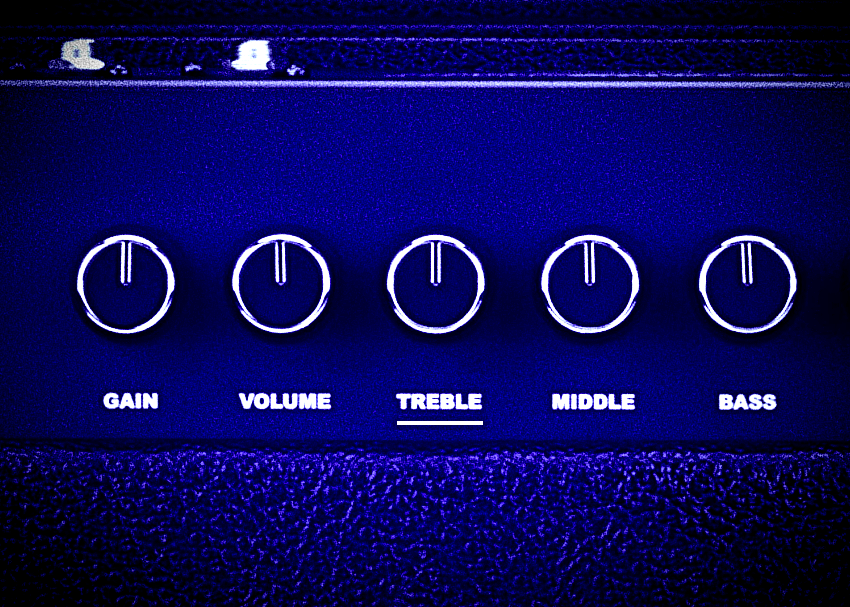
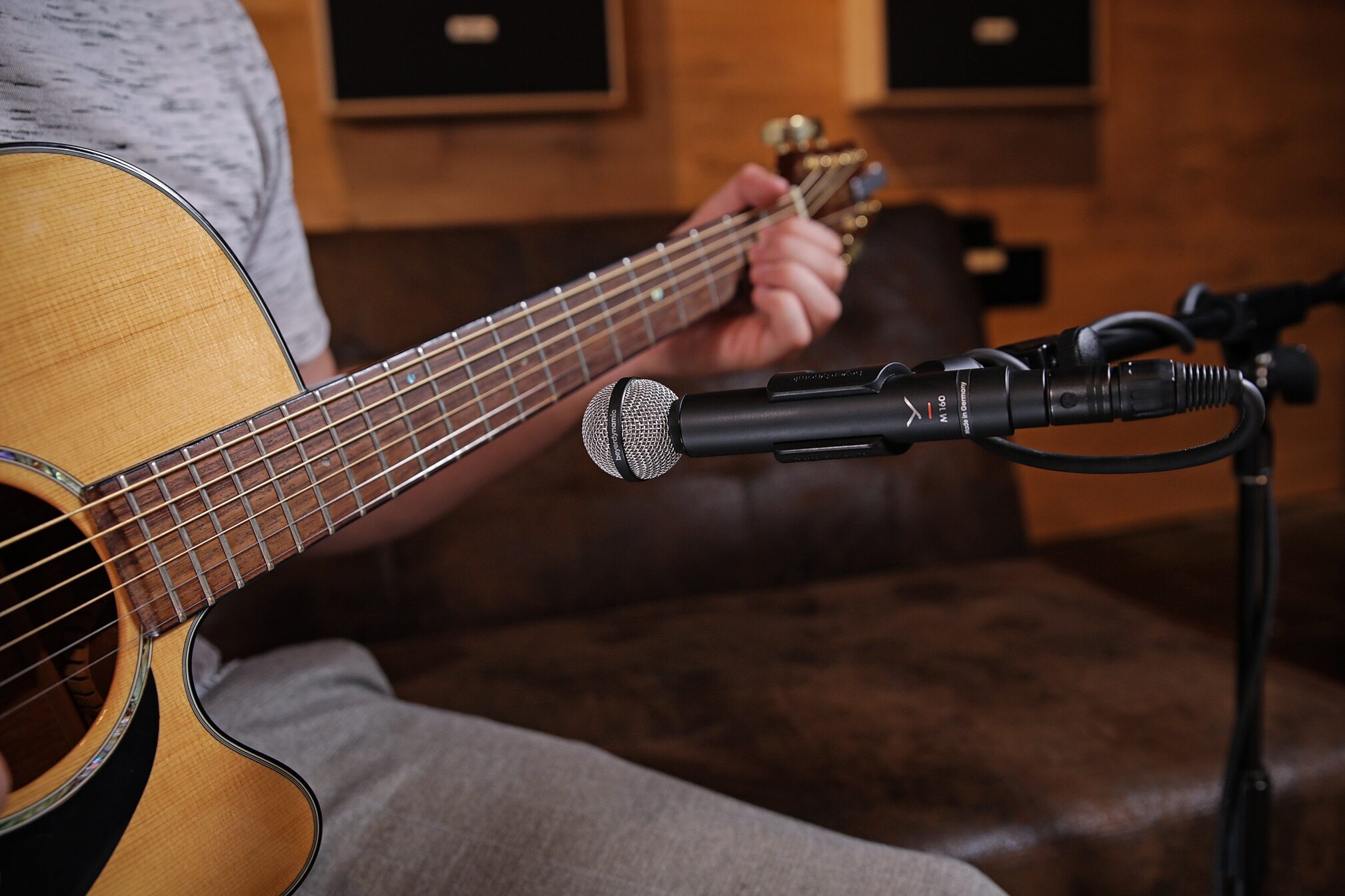


Leave a Reply